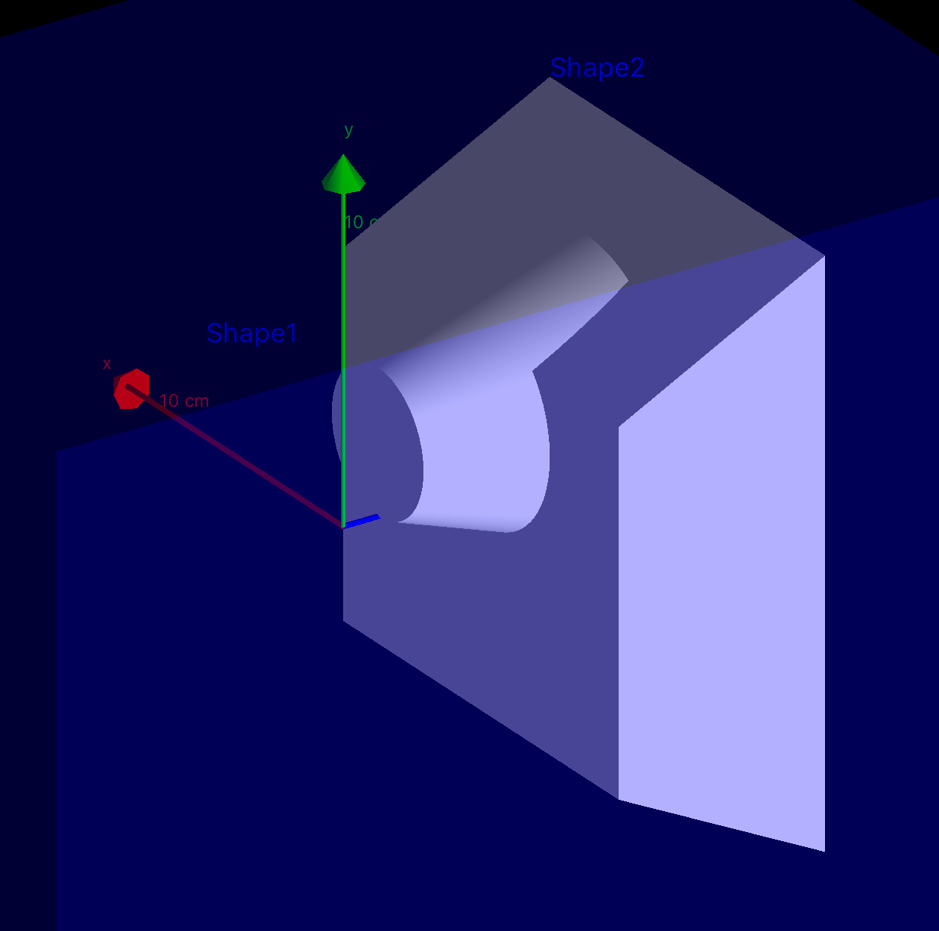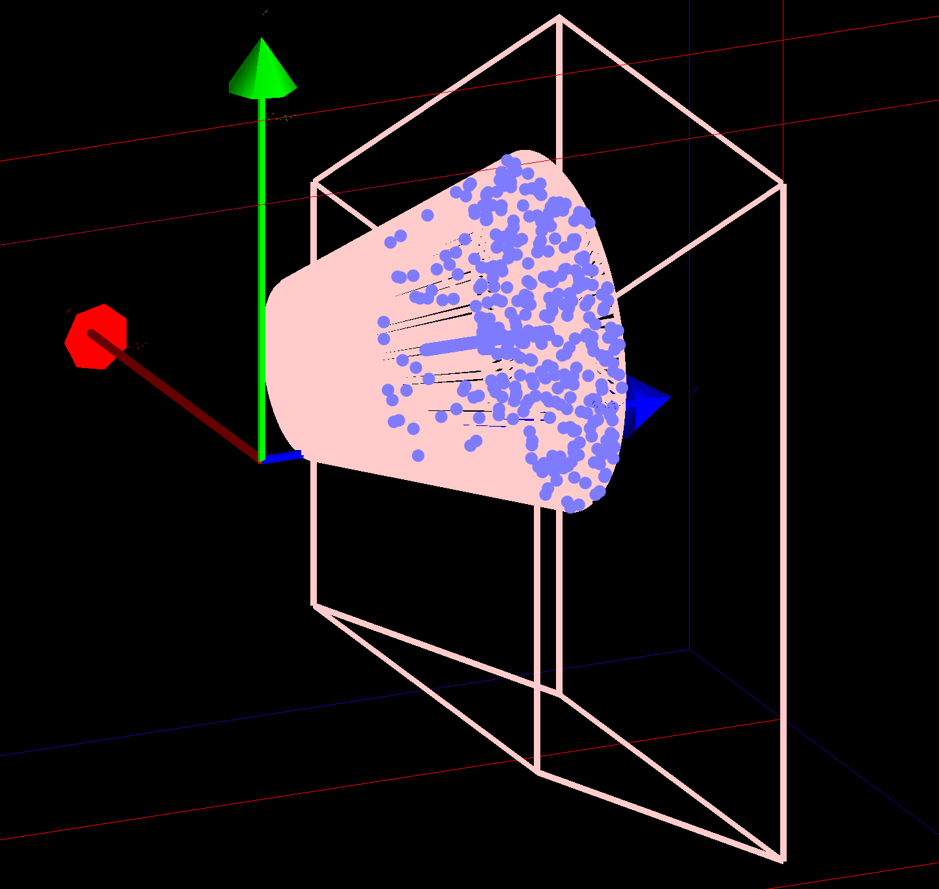Debugging geometry with vis¶
One command in particular - /vis/drawLogicalVolume (see below) - is
designed to highlight geometry overlaps. But you can explore and check your
geometry with simple vis commands. Most examples have a vis.mac file that contains these and several other useful commands — examples/basic/B1/vis.mac is a good place to look.
/vis/drawVolume
will draw the whole detector and your can rotate and zoom. If you want to see just part of the detector:
/vis/drawVolume <sub-detector-physical-volume-name> [<copy-number>]
draws all volumes with matching name. You may use a regular expression of the form /regexp/, e.g.:
/vis/drawVolume /Shape/
draws Shape1 and Shape2 (in example B1).
You can accumulate volumes:
/vis/drawVolume <physical-volume-name1>
/vis/scene/add/volume <physical-volume-name2>
You can also limit the depth of descent of the geometry hierarchy:
/vis/drawVolume ! ! 2
draws the world to depth 2.
/vis/scene/list # to see what’s in the scene.
If you are using Qt, what you might find helpful is a little pick icon, 5th from the left on the top menu bar of the Qt GUI. It opens a little window and if you click on a shape its properties are displayed in the window.
With a plain OpenGL window, try /vis/viewer/set/picking.
If you know the place of the volume in the geometry hierarchy (we call it a “touchable”), you can /vis/set/touchable and /vis/touchable/dump. Look at the guidance to see how to use the commands. You might find /vis/drawTree useful.
All vis commands have extensive guidance. Use help or ls on the command line or the Help tab in Qt, or see “Built-in Commands” in the Application Developers Guide.
Using advanced vis tools¶
/vis/drawLogicalVolume can highlight overlaps. But first you may need to
identify the offending volumes. Detecting Overlapping Volumes describes how to do this.
/geometry/test/run
gives output such as:
Checking overlaps for volume Shape1 ...
-------- WWWW ------- G4Exception-START -------- WWWW -------
*** G4Exception : GeomVol1002
issued by : G4PVPlacement::CheckOverlaps()
Overlap with volume already placed !
Overlap is detected for volume Shape1:0
with Shape2:0 volume's
local point (0,30,-29.1037), overlapping by at least: 896.261 um
NOTE: Reached maximum fixed number -1- of overlaps reports for this volume !
*** This is just a warning message. ***
-------- WWWW -------- G4Exception-END --------- WWWW -------

Fig. 26 Example B1 with overlapping volumes. (To generate the above one placement in B1::DetectorConstruction::Construct() was moved in order to make an overlap.)¶
Pick the offending volume name from the error message above:
/vis/touchable/findPath Shape1
This gives something like the following output:
World 0 Envelope 0 Shape1 0 (mother logical volume: Envelope)
Use this to set a particular touchable with "/vis/set/touchable <path>"
or to see overlaps: "/vis/drawLogicalVolume <mother-logical-volume-name>"
Then take the mother logical volume name from the above message:
/vis/drawLogicalVolume Envelope
/vis/viewer/set/style wireframe
Now we see the offending volumes highlighted in pink, and the sampling points in pale blue.

Fig. 27 Overlaps highlighted.¶
It may help to see all the points with:
/vis/viewer/set/hiddenMarker false
If by chance the offending volumes are “invisible”, make them visible with:
/vis/viewer/set/culling global false
/vis/viewer/rebuild